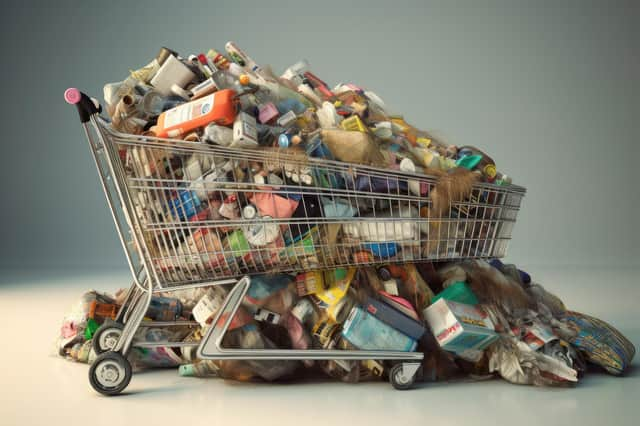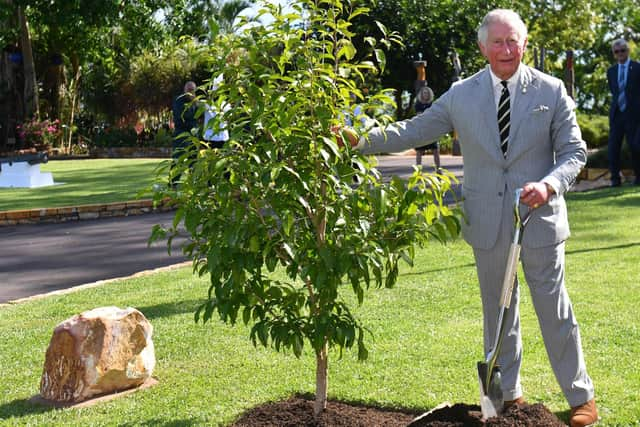Is living in Britain’s consumerist society really that great?


If we speak to our parents and to our grandparents though, borrowing was so commonplace at one time it didn’t warrant a ‘trend’ or a hashtag.
So what happened then?
Well, a combination of things.


We were all sold consumerism and we were told that owning things was what we wanted, but we also became a little more reticent and shy to ask for things.
Advertisement
Hide AdAdvertisement
Hide AdIn the 1940s, the 50s and even the 60s in Britain we knew all our neighbours.
Events such as street parties were organised for jubilees and we thought nothing of borrowing, whether that was a cup of sugar or a lawnmower or a lightbulb.
But things changed, we became more insular and borrowing fell out of fashion in favour of owning things.
But the good news is, in the economy we’re living in now where people know and care about the environment we’re going back to borrowing and that can only be a good thing.
Advertisement
Hide AdAdvertisement
Hide AdWhen we think about it, it makes perfect sense too – what’s the point of everyone on your street owning a lawnmower when one or two borrowed on rotation might service the whole street?
Rumour has it a drill is only used for 16 minutes a year on average so what's the need for each of us to own one?
And even if it was needed at the same time someone else needed it, where's the harm in waiting for a turn?
When we’re invited to several weddings and maybe christenings in a year, what’s the point of spending hundreds on a dress or suit we might wear once when you can borrow something for a fraction of the price and not leave it languishing in your wardrobe?
Advertisement
Hide AdAdvertisement
Hide AdAnd as well as saving money it also helps save on storage space and the holy grail of decluttering!
But it’s not just small things that can be borrowed.
There are car share schemes thriving all over the country – they’re especially brilliant for commuters who might only need a car once a week or month for a trip to the DIY store or a long jaunt to see family or go on holiday.
Facebook is packed with sharing pages too, whether it’s kids bikes, stand mixers or paddling pools.
We live in a world where our first thought when we need something is to stick our hands in our pockets and buy something but the reality is borrowing should really be where our minds go first.
Advertisement
Hide AdAdvertisement
Hide AdIt worked perfectly for generations gone by and is fantastic for the environment.
Besides, most of us have sheds, garages and lofts that are groaning under the weight of owning things and items gathering dust, if we start listing what we own ourselves on borrowing pages and groups, we’ll be getting the most out of what we own and helping our neighbours too.
Planting plenty of trees by royal appointment
There’s been a lot of news about trees in the past few weeks, whether that’s the King and Prince William planting them for the late Queen’s green tree planting pledge or them being cut down to make way for shopping centres in Plymouth.
Trees are fantastic. They can provide shade, absorb carbon dioxide through photosynthesis, produce fruits and nuts, fibre and fuel, help reduce the flow of water during floods and provide homes for birds and bugs alike.
Advertisement
Hide AdAdvertisement
Hide AdThere are plenty of companies that pledge a tree to be planted for every product bought or donation made but planting a sapling is just the first step to a magnificent woodland. What happens to all the millions of trees planted in the UK annually?
The reality is that increasingly a lot of them are dying before they reach maturity, in many cases due to extreme weather such as droughts. One of the most troubling aspect is that barely anyone’s keeping track and no one’s being held accountable for the wasted funds that run into millions of pounds planting trees that die and Which may or may not be replanted again.
For example, National Highways planted 850,000 saplings as part of a £1.5bn upgrade of the A14 between Cambridge and Huntingdon in 2020. But an internal review of all those trees planted has revealed three-quarters of them have since died.
They estimate the cost of replanting at £2.9m, which is a huge sum of money.
Advertisement
Hide AdAdvertisement
Hide AdNational Highways point to poor soil and extreme heat as the main causes for the saplings not surviving. But these figures were compiled before 2022s record temperatures and it is likely more saplings have perished in that heatwave and more will continue to do so with another heat wave summer forecast.
Many local authorities have declared a climate emergency, and as a result are embarking on planting trees to help remove carbon from the atmosphere (sometimes called carbon offsetting). However, tree planting is not guaranteed to succeed as the world warms. Local authorities spent more than £11m of taxpayers' cash on schemes but often fail to record survival rates. , At least 80 are failing to record whether trees planted are surviving and thriving,how can Local Authorities spend and then not check?
we need to know whether newly planted trees are surviving. We need to plant trees in Autumn so their roots can establish before the heatwaves and we need to follow the advice of foresters to tell us what species we need to plant as UK weather becomes more like those in Mediterranean countries. Many – native species won’t survive our changing climate. So we need to plant trees for the future.